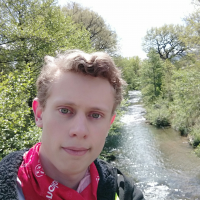Datasets:
annotations_creators:
- expert-generated
language_creators:
- found
language:
- tw
license:
- cc-by-nc-4.0
multilinguality:
- monolingual
size_categories:
- 100K<n<1M
source_datasets:
- original
task_categories:
- text-generation
- fill-mask
task_ids:
- language-modeling
- masked-language-modeling
paperswithcode_id: null
pretty_name: Twi Text C3
dataset_info:
features:
- name: text
dtype: string
config_name: plain_text
splits:
- name: train
num_bytes: 71198430
num_examples: 675772
download_size: 69170842
dataset_size: 71198430
Dataset Card for Twi Text C3
Table of Contents
- Dataset Description
- Dataset Structure
- Dataset Creation
- Considerations for Using the Data
- Additional Information
Dataset Description
- Homepage: https://www.aclweb.org/anthology/2020.lrec-1.335
- Repository: https://github.com/ajesujoba/YorubaTwi-Embedding/
- Paper: https://www.aclweb.org/anthology/2020.lrec-1.335
- Leaderboard:
- Point of Contact: Kwabena Amponsah-Kaakyire
Dataset Summary
Twi Text C3 was collected from various sources from the web (Bible, JW300, wikipedia, etc) to compare pre-trained word embeddings (Fasttext) and embeddings and embeddings trained on curated Twi Texts. The dataset consists of clean texts (i.e the Bible) and noisy texts (with incorrect orthography and mixed dialects) from other online sources like Wikipedia and JW300
Supported Tasks and Leaderboards
For training word embeddings and language models on Twi texts.
Languages
The language supported is Twi.
Dataset Structure
Data Instances
A data point is a sentence in each line. { 'text': 'mfitiaseɛ no onyankopɔn bɔɔ ɔsoro ne asaase' }
Data Fields
text: astringfeature. a sentence text per line
Data Splits
Contains only the training split.
Dataset Creation
Curation Rationale
The data was created to help introduce resources to new language - Twi.
Source Data
Initial Data Collection and Normalization
The dataset comes from various sources of the web: Bible, JW300, and wikipedia. See Table 1 in the paper for the summary of the dataset and statistics
Who are the source language producers?
Jehovah Witness (JW300) Twi Bible Yorùbá Wikipedia
Annotations
Annotation process
[More Information Needed]
Who are the annotators?
[More Information Needed]
Personal and Sensitive Information
[More Information Needed]
Considerations for Using the Data
Social Impact of Dataset
[More Information Needed]
Discussion of Biases
The dataset is biased to the religion domain (Christianity) because of the inclusion of JW300 and the Bible.
Other Known Limitations
[More Information Needed]
Additional Information
Dataset Curators
The data sets were curated by Kwabena Amponsah-Kaakyire, Jesujoba Alabi, and David Adelani, students of Saarland University, Saarbrücken, Germany .
Licensing Information
The data is under the Creative Commons Attribution-NonCommercial 4.0
Citation Information
@inproceedings{alabi-etal-2020-massive,
title = "Massive vs. Curated Embeddings for Low-Resourced Languages: the Case of {Y}or{\`u}b{\'a} and {T}wi",
author = "Alabi, Jesujoba and
Amponsah-Kaakyire, Kwabena and
Adelani, David and
Espa{\~n}a-Bonet, Cristina",
booktitle = "Proceedings of the 12th Language Resources and Evaluation Conference",
month = may,
year = "2020",
address = "Marseille, France",
publisher = "European Language Resources Association",
url = "https://www.aclweb.org/anthology/2020.lrec-1.335",
pages = "2754--2762",
abstract = "The success of several architectures to learn semantic representations from unannotated text and the availability of these kind of texts in online multilingual resources such as Wikipedia has facilitated the massive and automatic creation of resources for multiple languages. The evaluation of such resources is usually done for the high-resourced languages, where one has a smorgasbord of tasks and test sets to evaluate on. For low-resourced languages, the evaluation is more difficult and normally ignored, with the hope that the impressive capability of deep learning architectures to learn (multilingual) representations in the high-resourced setting holds in the low-resourced setting too. In this paper we focus on two African languages, Yor{\`u}b{\'a} and Twi, and compare the word embeddings obtained in this way, with word embeddings obtained from curated corpora and a language-dependent processing. We analyse the noise in the publicly available corpora, collect high quality and noisy data for the two languages and quantify the improvements that depend not only on the amount of data but on the quality too. We also use different architectures that learn word representations both from surface forms and characters to further exploit all the available information which showed to be important for these languages. For the evaluation, we manually translate the wordsim-353 word pairs dataset from English into Yor{\`u}b{\'a} and Twi. We extend the analysis to contextual word embeddings and evaluate multilingual BERT on a named entity recognition task. For this, we annotate with named entities the Global Voices corpus for Yor{\`u}b{\'a}. As output of the work, we provide corpora, embeddings and the test suits for both languages.",
language = "English",
ISBN = "979-10-95546-34-4",
}
Contributions
Thanks to @dadelani for adding this dataset.
